Shock Wave / Turbulent Boundary Layer Interactions
The accurate numerical simulation of shock wave / turbulent boundary layer interactions (SBLIs) remains one of the more challenging problems in computational fluid dynamics. Such interactions induce high fluctuating pressure and heat transfer loads and can cause flow separation that can lead to aircraft inlet unstart. The AECFDL has developed hybrid large-eddy / Reynolds-averaged Navier-Stokes simulation techniques that have proven successful in simulating a wide range of SBLIs. The methods have predicted several key features of SBLIs, including anisotropic amplification of the Reynolds-stress tensor throughout the interaction, the correlation of a dominant low-frequency component of unsteadiness with the most probable residence time of the fluid within the recirculation region, and the effect of bleed in suppressing the strong amplification of the Reynolds-stress components. Other simulations have focused on the effects of various devices (micro-ramps, bleed-hole arrays, meso-flap arrays) for controlling SBLIs. These devices have been modeled using immersed-boundary techniques.
Images
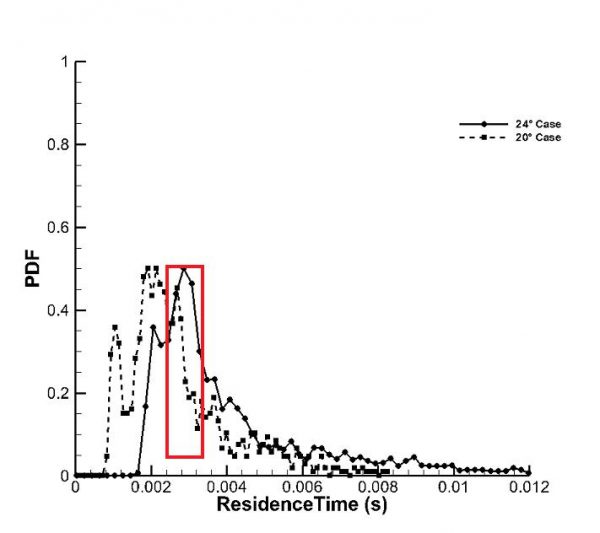
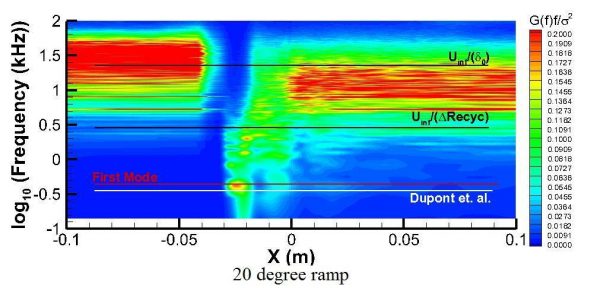
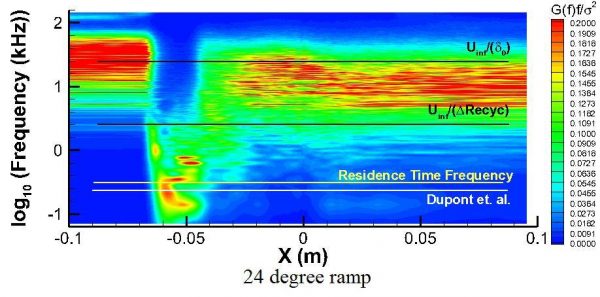
Correlation of most probable residence time (left) with dominant low-frequency mode (right: spectral maps): Mach 3 20 and 24-degree compression-corner interactions

Instantaneous and time-averaged centerplane temperature contours: Mach 3 flow over a 20 degree compression corner
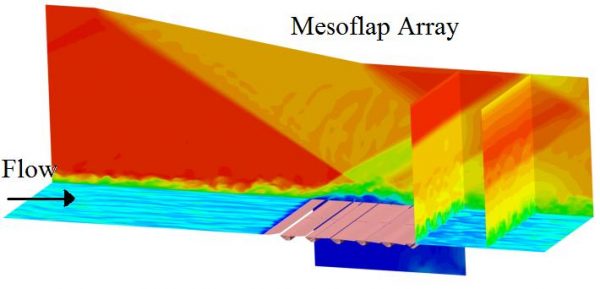
Impinging shock / boundary layer interaction control through deformable ‘meso-flaps’
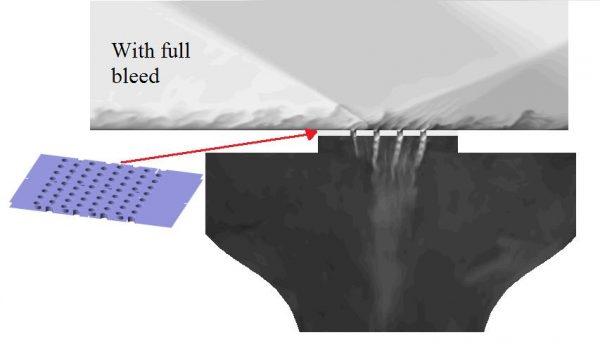
Impinging shock / boundary layer interaction control through boundary-layer bleed
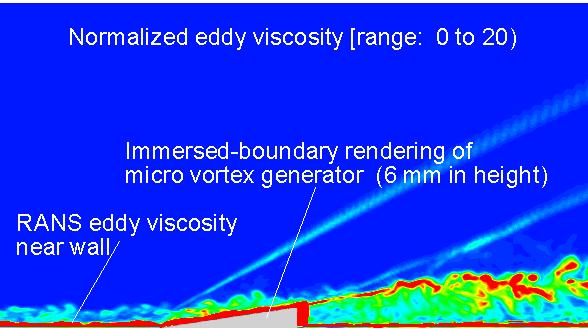
Centerplane eddy viscosity contours: LES/RANS simulation of flow over a micro vortex generator
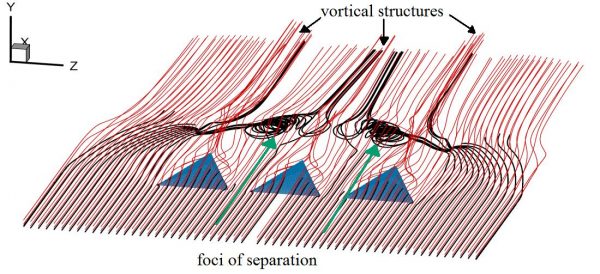
Streamlines: SBLI control through embedded micro vortex generators
Selected References
Gieseking, D. and Edwards, J.R. “Simulations of a Mach 3 Compression-Ramp Interaction using LES/RANS Models” AIAA Journal, Vol. 50, No. 10, 2012, pp. 2057-2068.
Ghosh, S., Choi, J-I., and Edwards, J.R. “Numerical Simulation of the Effects of Mesoflaps in Controlling Shock / Boundary Layer Interactions”, Journal of Propulsion and Power, Vol. 28, No. 5, 2012, pp. 955-970
Gieseking, D.A., Choi, J.-I., Edwards, J.R., and Hassan, H.A. “Compressible Flow Simulations using a New LES/RANS Model” AIAA Journal, Vol. 49, No. 10, 2011, pp. 2194-2209.
Ghosh, S., Choi, J.-I., and Edwards, J.R. “Simulation of Shock Boundary Layer Interactions with Bleed using Immersed Boundary Methods” Journal of Propulsion and Power, Vol. 26, No. 2, 2010.
Ghosh, S., Choi, J-I., and Edwards, J.R. “Numerical Simulations of the Effects of Micro-Vortex Generators using Immersed Boundary Methods” AIAA Journal, Vol. 48 No. 1, 2010, pp. 92-103.
Edwards, J.R. “Numerical Simulations of Shock / Boundary Layer Interactions using Time-Dependent Modeling Techniques – a Survey of Recent Results” Progress in Aerospace Sciences, Vol. 44, No. 6, 2008, pp. 447-465.
Edwards, J.R., Choi, J-I., and Boles, J.A. “Hybrid Large-Eddy / Reynolds-Averaged Navier-Stokes Simulation of a Mach-5 Compression Corner Interaction”, AIAA Journal, Vol. 46, No. 4, 2008, pp. 977-991.
